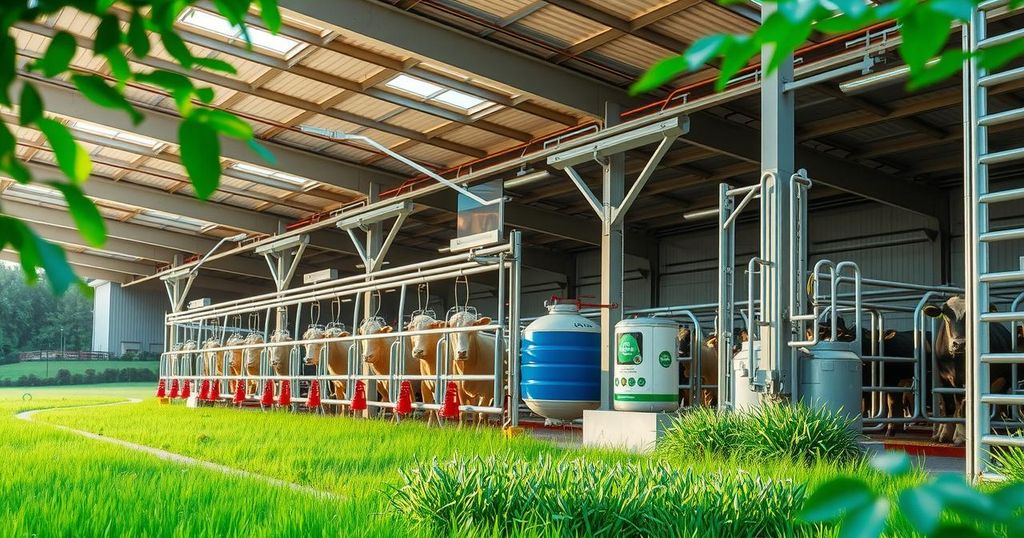Artificial Intelligence in Livestock Farming: Current Landscape and Future Growth
The global Artificial Intelligence in Livestock Farming market is projected to grow from USD 589.6 million in 2024 to USD 4,903.9 million by 2034, with a CAGR of 26.5%. Key drivers include heightened consumer demand, government support for technology adoption, and the integration of innovations like AI and IoT in managing livestock health and productivity. Major players include BovControl and Quantified AG, with significant contributions from regions such as North America and Asia Pacific.
The global market for Artificial Intelligence in Livestock Farming is on a remarkable trajectory, currently valued at USD 589.6 million in 2024, and anticipated to leap to USD 4,903.9 million by 2034, showcasing a staggering compound annual growth rate (CAGR) of 26.5% during the 2025-2034 period. This growth reflects heightened awareness of data-driven decision-making in animal husbandry, coupled with extensive support from governments for modern technological applications in livestock management.
AI’s integration into agriculture serves as a digital partner, enhancing traditional farming practices through smart algorithms and IoT-enabled sensors. Key technologies like deep learning, predictive analytics, and machine learning are revolutionizing livestock operations, ensuring efficient monitoring and management of health and production processes. Moreover, as both population needs and awareness regarding livestock welfare increase, so does the adoption of AI solutions.
The market is set to expand further due to factors such as the population boom, rising consumer demand for poultry and dairy, and the urgent need for improved livestock health. However, challenges persist, including inadequate infrastructure and rapid disease spread among cattle. North America is poised to lead this market, driven by technological awareness and a push for higher quality dairy products, alongside effective cattle handling solutions.
The Asia Pacific region is also projected to witness substantial growth, primarily due to rising food consumption and the prevalence of diseases in livestock. Companies like Raven Industries and IBM are at the forefront, forming partnerships to enhance product offerings in cattle management, while advancements in IoT and computer vision fuel this segment’s evolution.
Key players such as BovControl, Faromatics, and Quantified AG are pivotal in this realm. Recent initiatives include Cainthus’s Alus Behavior, which monitors dairy cows’ behaviors to optimize milk production, and Merck’s acquisition of Quantified AG to advance early disease detection in cattle.
The market encompasses several segments including solutions (software/apps), IoT sensors, and services, with applications ranging from real-time monitoring of livestock behavior to production management and fencing control. These innovations not only promise efficiency but also cater to both small and large-scale farms, ensuring that all aspects of livestock farming benefit from this technological renaissance.
In summary, the Artificial Intelligence in Livestock Farming market showcases significant potential for growth fueled by innovation and collaboration. With rising demand and technological advancements, the future holds bright prospects for transforming traditional livestock management into a more efficient, data-driven process.
The rise of Artificial Intelligence in Livestock Farming represents a pivotal shift towards a more efficient and data-driven approach to managing livestock. With a projected substantial market growth driven by increasing population demands, technological advancements, and an emphasis on animal welfare, the landscape of livestock management is evolving. Stakeholders must remain vigilant of market trends, challenges, and opportunities to harness the full potential of AI in this sector.
Original Source: www.openpr.com




Post Comment